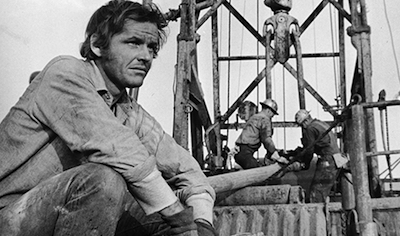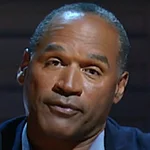 Ryan McDermott |
Before we dive into the infinite wisdom of Jack Nicholson’s films, let me explain something. I understand the idea of authenticity in PR and marketing isn’t new. Like any industry, trends come and go. Consumers grow fatigued by one style and, as PR professionals are typically concerned, we pivot to the next trend.
The problem, as I see it, is that we often treat authenticity as a tactic that has a concrete start and finish date. If we can’t win our audience over with a flashy campaign then we’ll turn to a more bare-bones, “honest” approach. While there’s nothing wrong with shifting strategies, the minute you use start using authenticity as a rhetorical device, you’re sunk.
Authenticity isn’t a tactic, or a style or an event. You can’t deploy it simply where you see fit. That’s because authenticity, by definition, isn’t about being raw or gritty, it’s about acting in a way that’s consistent with your (or your company’s) values and beliefs.
Authenticity should be baked into everything you do. Whether you’re highlighting serious work being done to improve lives or promoting an aspirational consumer product that lifts us out of the drudgery of our daily routines, customers are looking for a human narrative that touches on the struggles and successes we all experience.
Storytelling on the 70s big screen
The cinema of the 1970s provided us with powerful examples of storytelling and the human experience. Bob Rafelson’s Five Easy Pieces — a chamber drama about an oil-rig worker — gave birth to the gritty realism that ruled most of 1970s and mirrored society’s post-hippie era cynicism. By the end of the decade, America was consumed with the epic space opera Star Wars, which relieved film-goers of those dark burdens in favor of good triumphing over evil.
These two movies occupy separate sides of the genre-spectrum and bookend a turbulent decade. But what they share is authenticity.
In Five Easy Pieces, Bobby Dupea (Jack Nicholson) struggles to reconcile his working class life in the oil fields with his privileged upbringing as a piano prodigy. The impending death of his father forces him to confront not only his family’s demons, but also those of his own making. Estranged from his father, Bobby has to accept the past he rejected as well as his own internal anger. But much like life, there’s no concrete resolution. We leave Bobby once again running from his problems. And that works because, even with all he’s learned, it’s within Bobby’s character to run away. That’s not necessarily a good thing, but it’s definitely authentic.
 Bobby Dupea (Jack Nicholson) sits on an oil rig in Five Easy Pieces (1970). |
Seven years later, the first Star Wars film is perhaps most noted for its impact on the future of special effects as well as its epic scale. At the time, however, it was also an effective way for people to escape a decade that saw an end to the Vietnam War, Richard Nixon’s resignation, gasoline rationing and increasing urban decay.
Buried in that space opera about the Rebel Alliance's struggle against the Galactic Empire is a story as intimate and relatable as Five Easy Pieces. Luke Skywalker comes from a humble background as a farmer dreaming of doing something great with his life, when he finds out that his father was actually a Jedi Knight. The journey makes him reevaluate not only the nature of good and evil, but also what it means to be a family member.
These are both stories about the human condition, albeit from different galaxies. The influence of the original Star Wars and the subsequent franchise that followed is immeasurable. The movie became iconic and its characters became part of our own lives. While Five Easy Pieces wasn’t the blockbuster-defining film of the decade, it was nominated for four Academy Awards and five Golden Globe Awards. In 2000, it was selected to be preserved by the Library of Congress in the National Film Registry.
What does any of this have to do with PR?
While these movies were afforded millions of dollars and thousands of production hours to compile long and compelling narratives, the truth is that PR professionals can create the same authentic voice in a tweet, a media advisory or even a blog post.
Storytelling has become such an integral part of PR and marketing that, as professionals, we’re constantly trying to shape narratives around the brands we represent. But those stories are worthless if they’re inauthentic. Customers have access to more information than ever, and if you try to fool them you’re likely to fail.
This isn’t just fluff. There are hard numbers to back up the power of storytelling and, by extension, thought leadership.
A June 2017 survey of 1,300 business decision makers and C-suite executives by LinkedIn and Edelman showed that nearly half said thought leadership directly led them to award business to a company. The same number said thought leadership helps companies command a premium for their goods or services.
A great case study in authenticity comes from Ann Handley, head of content at MarketingProfs, and author of Everybody Writes. Handley wrote on her blog last year about a LinkedIn post that became a sensation, largely due to its authenticity.
“As an exacting writer and a proponent of a slow and strategic marketing, I should be having an aneurysm (Ann-eurysm?) over how a single, sweary, typo-infested LinkedIn post slopped together in 20 minutes sparked a flurry of online engagement and $90K in sales,” Handley wrote. “But I’m not. Because from a marketing and writing point of view, there’s a lot to love about the post-I-should-hate.”
Handley explained how Cara Mackay, who owns a family shed-building business in Scotland, published a profane, grammar-defying post about what it’s like to work from home. It took Mackay all of 20 minutes to write, but it gives a stunning look at what it’s like to juggle work, family and everything else that gets in the way.
“Imagine a world where you are not shackled by the restraints of your never ending house of doom,” Mackay’s LinkedIn post reads. “Imagine a place you can call your own [fade out wavy dreaming-ness] …”
What made the post successful was its authenticity. The use of profanity and its hectic nature would never have worked if it came from a C-suite executive at a starched-collar legacy company.
“It boils over with the tension anyone feels when trying to balance home, family, work, recycling day, laundry, walking the dog, dinner,” Handley wrote of the post.
The numbers don’t lie. While Mackay’s previous posts barely made a sound, with fewer than 100 views and only two comments, the work from home rant garnered 1,702 comments, 617 shares and nearly 10,000 likes. It was effective because Mackay told an authentic story about her struggles every morning and naturally tied them into her own business making boutique sheds.
“It's not rocket science, get out the house get into the shed and actually make something worth working for,” Mackay concludes before tagging the post #shedlife.
Not long after that post, Mackay updated her Linkedin audience with a video addressing her tone and language.
“I know there are going to be some people who are absolutely disgusted. But I also understand there are plenty of people out there who think that profanity as a use in the Scottish dialect is a beautiful thing,” she wrote.
Now that’s an honest and authentic voice.
***
Ryan McDermott is an Account Executive at Sage Communications. He's a public relations writing professional, content creator and former print reporter working at the intersection of technology and government.


 The techniques deployed by OJ Simpson's defense team in the "trial of the century" served as a harbinger for those used by Donald Trump... People worry about the politicization of medical science just as much as they fret about another pandemic, according to Edelman Trust Barometer... Book bans aren't restricted to red states as deep blue Illinois, Connecticut and Maryland challenged at least 100 titles in 2023.
The techniques deployed by OJ Simpson's defense team in the "trial of the century" served as a harbinger for those used by Donald Trump... People worry about the politicization of medical science just as much as they fret about another pandemic, according to Edelman Trust Barometer... Book bans aren't restricted to red states as deep blue Illinois, Connecticut and Maryland challenged at least 100 titles in 2023. The NBA, which promotes legalized gambling 24/7, seems more than hypocritical for banning player for placing bets... Diocese of Brooklyn promises to issue press release the next time one of its priests is charged with sexual abuse... Truth Social aspires to be one of Donald Trump's iconic American brands, just like Trump University or Trump Steaks or Trump Ice Cubes.
The NBA, which promotes legalized gambling 24/7, seems more than hypocritical for banning player for placing bets... Diocese of Brooklyn promises to issue press release the next time one of its priests is charged with sexual abuse... Truth Social aspires to be one of Donald Trump's iconic American brands, just like Trump University or Trump Steaks or Trump Ice Cubes. Publicis Groupe CEO Arthur Sadoun puts competition on notice... Macy's throws in the towel as it appoints two directors nominated by its unwanted suitor... The Profile in Wimpery Award goes to the Ford Presidential Foundation for stiffing American hero and former Wyoming Congresswoman Liz Cheney.
Publicis Groupe CEO Arthur Sadoun puts competition on notice... Macy's throws in the towel as it appoints two directors nominated by its unwanted suitor... The Profile in Wimpery Award goes to the Ford Presidential Foundation for stiffing American hero and former Wyoming Congresswoman Liz Cheney. JPMorgan Chase chief Jamie Dimon's "letter to shareholders" is a must-read for PR people and others interested in fixing America and living up to its potential... Get ready for the PPE shortage when the next pandemic hits... Nixing Netanyahu. Gaza carnage turns US opinion against Israel's prime minister.
JPMorgan Chase chief Jamie Dimon's "letter to shareholders" is a must-read for PR people and others interested in fixing America and living up to its potential... Get ready for the PPE shortage when the next pandemic hits... Nixing Netanyahu. Gaza carnage turns US opinion against Israel's prime minister. Trump Media & Technology Group sees Elon Musk's X as an option for those who want the free expression promised by Truth Social but without Donald Trump, owner of 57.3 percent of TMTG... Chalk one up for "anti-woke warrior" governor Greg Abbott as University of Texas lays off 60 DEI-related staffers... Five percent of Americans see the US as its own worst enemy, according to Gallup.
Trump Media & Technology Group sees Elon Musk's X as an option for those who want the free expression promised by Truth Social but without Donald Trump, owner of 57.3 percent of TMTG... Chalk one up for "anti-woke warrior" governor Greg Abbott as University of Texas lays off 60 DEI-related staffers... Five percent of Americans see the US as its own worst enemy, according to Gallup.


 Have a comment? Send it to
Have a comment? Send it to 
No comments have been submitted for this story yet.